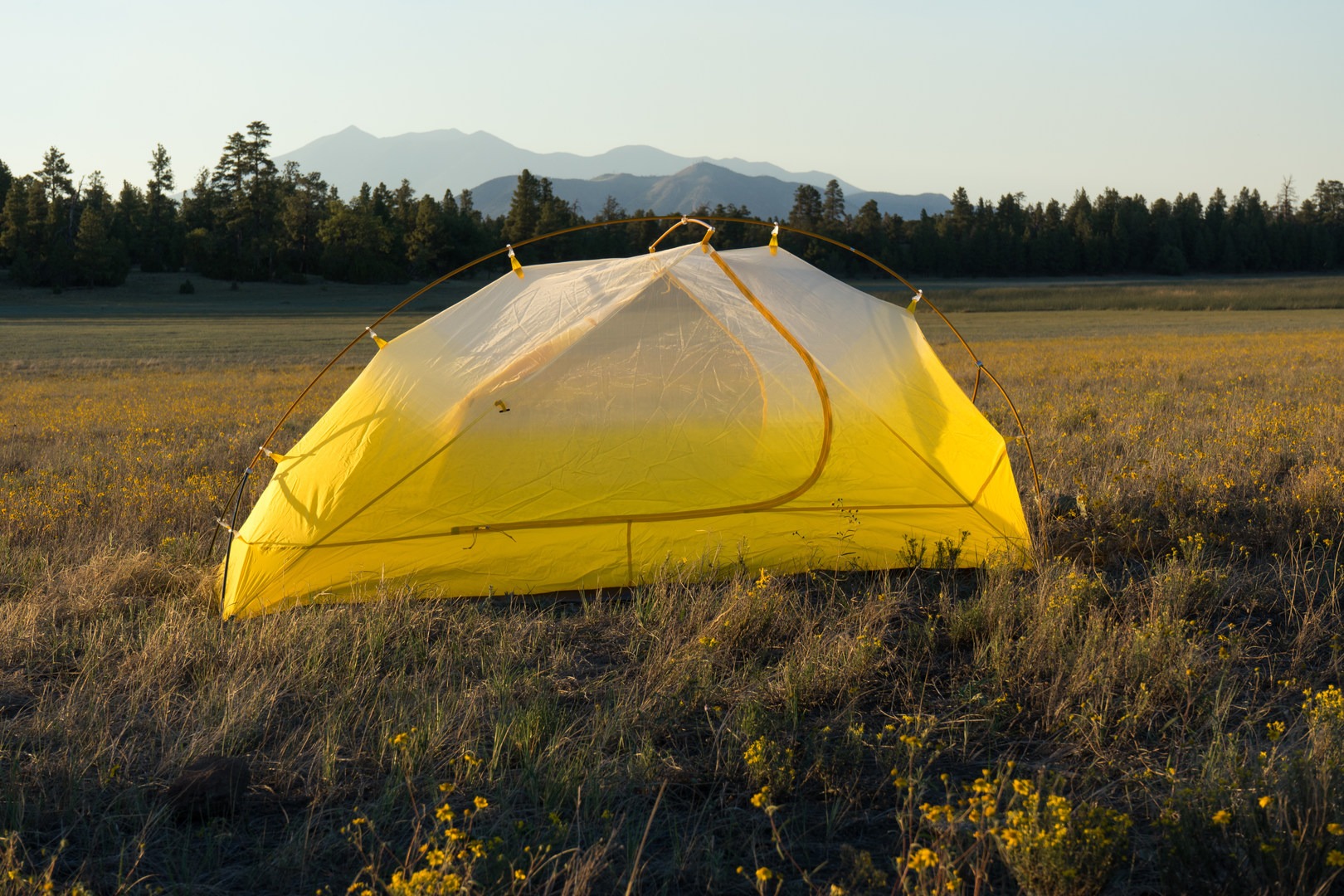Fusion 2 specs
- 3 lbs 9 oz / 1.62 kg packed weight
- 38-inch max interior height
- 19 x 6 inches packed size
- 28 sq ft floor area
- 15 sq ft vestibule combined area
- 2 doors
- 3-season
Where to get it
- Price: $429.95
- TheNorthFace.com
- Backcountry
- Moosejaw
The Bottom Line: The Fusion 2 is The North Face's rendition of the ever-popular two-person, three-season backpacking tent, and it's a pretty fine result. It is ultralight, eye catching, and comes with its own footprint. It has a few design quirks that some may dislike, but it's sure to find fans among others.
This tent really is super light, especially considering that the packed weight includes the footprint, which the tent comes with out of the box. This is unusual for ultralights, so it sets the Fusion 2 apart in value for the money.
The trail weight can drop to under 3 pounds by leaving a few stakes and the stuff sacks at home. If you are a fan of truly ultralight shelters, you can ditch the tent body and bring only the poles and fly to pitch a shelter that weighs just 2 lbs 3 oz.
Part of TNF's strategy for shaving weight, however, seems to be skimping on space. Though I wouldn't call the tent stuffy by any means, it is noticeably less roomy than some similar ultralights. The walls taper at awkwardly shallow angles near the base, which closes in on the floor space and functionally wastes some of the interior room. Also, the height is a maximum of only 38 inches, which is not much for taller people. The vestibule space is a bit small as well, with only 7.5 square feet outside each door.
For two small-to-average sized backpackers, however, the space is perfectly adequate, and the tent has some other commendable features. First is the unique sidewall transition from tent base to canopy, where the material fades smoothly from solid to mesh. The effect is purely aesthetic, but it is pretty cool. After admiring the open canopy look, I was pretty disappointed after putting on the fly, though, because the scheme is just a two-toned yellow and drab gray with nothing eye catching about it. Choosing to leave the fly off on a clear evening, I noticed that humans are far from the only ones that find the yellow color attractive. Nearly every kind of pollinating insect (some I welcomed and others I didn't) wanted to share my home, too.
Practical features include a large mesh storage pocket in the tent body and storm flaps over the fly zippers for extra protection in bad weather. The tent comes with two guylines and has attachment points for more for stabilizing with your own line in high winds.
The poles are in an interconnected hub configuration, and the ends are color coded with the fittings on the tent corners. This makes set up pretty quick and easy. However, in my poles the stretch cord is cut too long and therefore very loose, which makes it a bit more work than necessary to fit the segments together. Though it seems like this should be a trivial annoyance, it actually added significant seconds to the out-of-box setup time for me, so I consider it a drawback. It is fixable by removing the pole ends with pliers, cutting the cord shorter, and re-tying it.
Another design oversight that makes a slight inconvenience is the lack of color coding on the footprint. While the poles, body, and fly corners are all sensibly color coded, the loops at the footprint corners are all one color even though the shape is asymmetrical. You will have to pay attention to which end of the footprint is wider, to match it up with the wider head end of the tent.
These few shortcomings are admittedly pretty minor and may not bother certain users at all, but they could be a deal breaker for others. If you don't mind the quirks, then the Fusion 2 is a strong competitor in the ultralight market. If dropping ounces is your main priority, and you also like the flashy modern design, then this tent could be for you.





Comments
Sign In and share them.